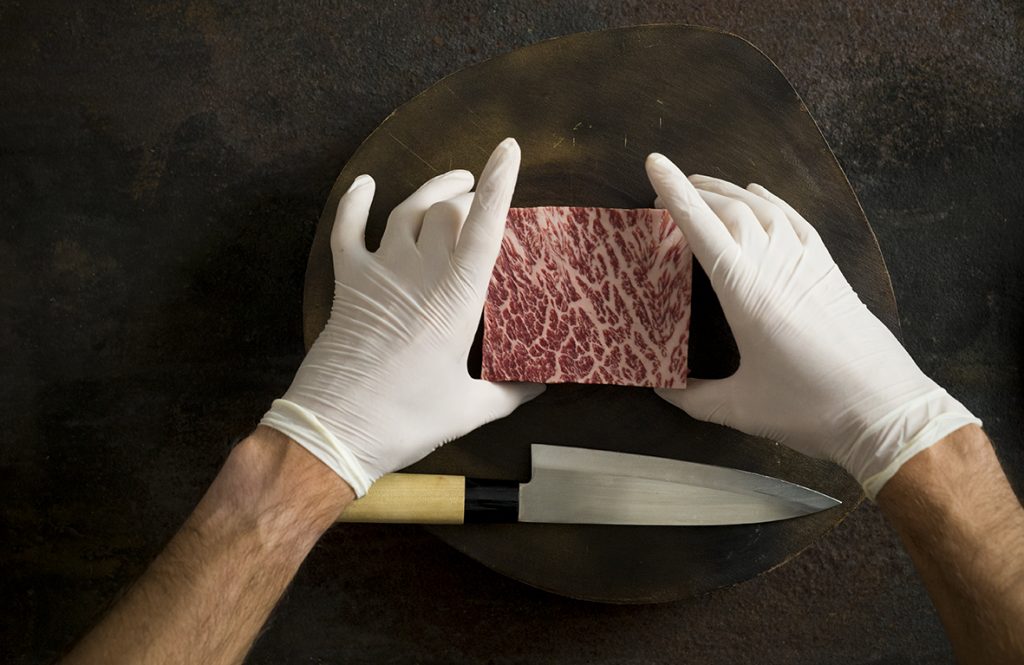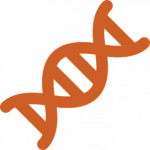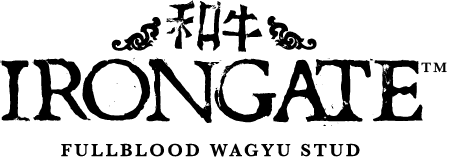
What Is Wagyu?
Wagyu (pronounced ‘wha-gyou’) is a breed of cattle native to Japan and is considered one of Japan’s national treasures.
What is Wagyu?
The Japanese word Wagyu can be translated to mean Japanese beef – as “wa” means Japanese and “gyu” means beef.
Some people may be familiar with ‘Kobe beef’, which is world-famous for its quality. Kobe beef is simply Wagyu that comes from the Kobe region in Japan or “Kobegyu”.
Characteristically, Wagyu beef is highly marbled. This means that the muscle is finely interspersed with monounsaturated fat. This marbling gives the beef its “melt in the mouth” flavour, moisture and tenderness. When cooked, the marbling is absorbed into the meat and this provides an exquisite and luxurious experience.
Wagyu were originally draft animals used in agriculture and were selected for their physical endurance with strong forequarters. This selection favoured animals with more intra-muscular fat cells – ‘marbling’ – which provided a readily available energy source. Japanese Wagyu are derived from native Asian cattle.
There is some evidence of genetic separation into the Wagyu genetic strain as much as 350 years ago. There were infusions of British and European breeds in the late 1800s, but the breed was closed to outside genetic infusions in 1910.
The variation of conformation within the Wagyu breed is greater than the variation across British and European breeds. These differences have produced a Japanese national herd that comprises 90% Japanese black cattle, the remainder being red.
What should wagyu meat look like?
In Australia, AUSMEAT score the marbling from 1 up to 9+ by comparing a cross-section (eye muscle) of meat to standardised reference images. The higher the score, the more marbling. Marble fineness is also an important attribute as there is a high correlation between fine marbling and the low melting temperature of the intramuscular fats. The ultimate Wagyu taste experience is delicious.
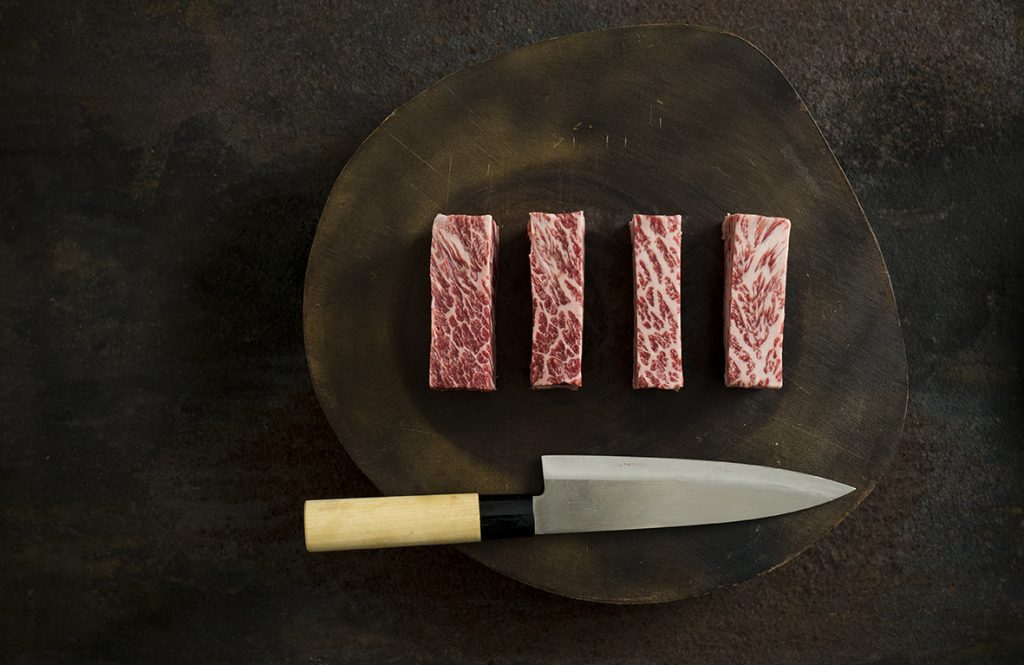
Is there a local market in Australia for fullblood Wagyu beef?
Wagyu beef is increasingly being seen in restaurants and gourmet butchers and grocers around Australia and is considered a luxury item. It’s a price tag of between $150 to $200 per kilogram for the best cuts, ensuring the beef will be more of a special occasion meal for many rather than an everyday occurrence.
At the same time, Wagyu is still in its infancy in Australia and is still to achieve greater awareness with the general public. The Australian market will need to be educated on the attributes of marbling. After many years of the lean beef campaign, it will take time to explain the reasons for the marbled appearance of the Wagyu.
The export market for both boxed and live Wagyu cattle is expanding rapidly and Australia’s clean, green, and well-managed environment makes it a popular choice for international beef markets.
Can people buy Irongate Wagyu's produce in Australia?
Irongate Wagyu exclusively sells all of its beef through its meat subsidiary brand, FUTARI Wagyu. FUTARI means “two people” in the Japanese language and reflects the origins of the fullblood Wagyu stud located close to Two Peoples Bay. FUTARI Wagyu can be found at various butcher shops, restaurants and wholesalers, as well as offering a home delivery service for consumers which can be arranged through the new-look online store.
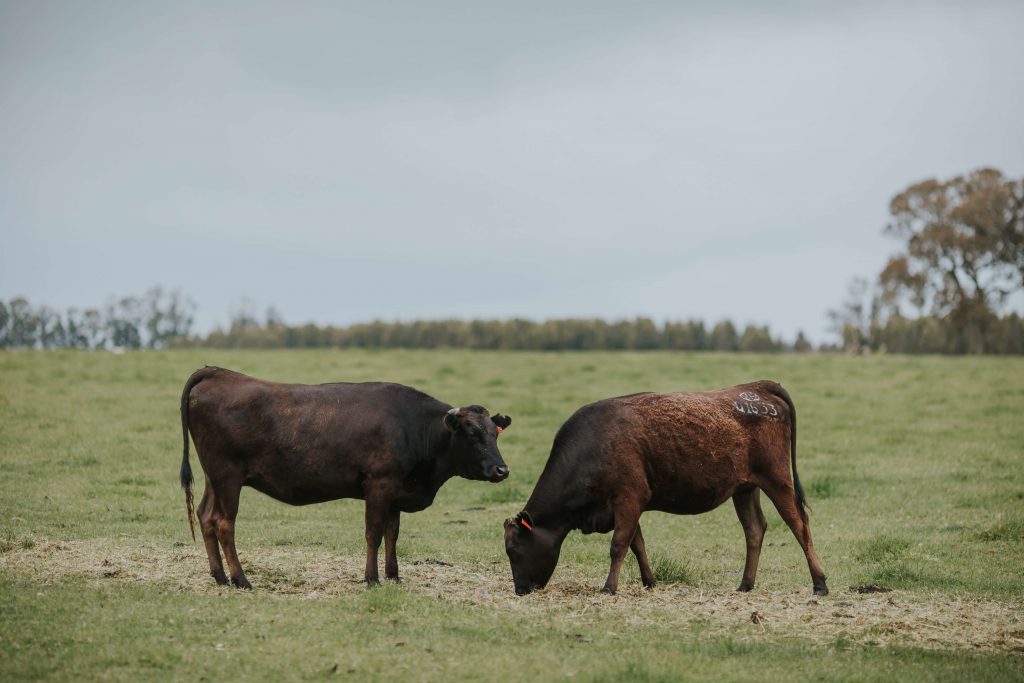
How is Irongate Wagyu Beef different from other producers?
Irongate Wagyu has consistently been achieving some of the best meat grades outside of Japan. Fullblood Wagyu cattle are increasingly being graded 9+, higher than the highest grade in Australia.
Irongate Wagyu’s breeding program is based on tried and proven traditional Japanese farming practices that have been successfully adapted to Australian conditions.
Irongate Wagyu places great emphasis on animal welfare by grazing cattle on rich pastures for the first half of their life and mustering them on horseback to keep them calm and stress-free. The animals are then fed a high protein dietary regime for 300-500 days. These practices take on greater significance with fullblood Wagyu because a more docile animal won’t draw on their reserves of energy (marbling) and this results in more tender, better tasting product.
Irongate Wagyu calves are raised on their mother’s milk and pasture for the first 15 months, which is the most natural and healthy method and enables them to be free of respiratory problems and other diseases.
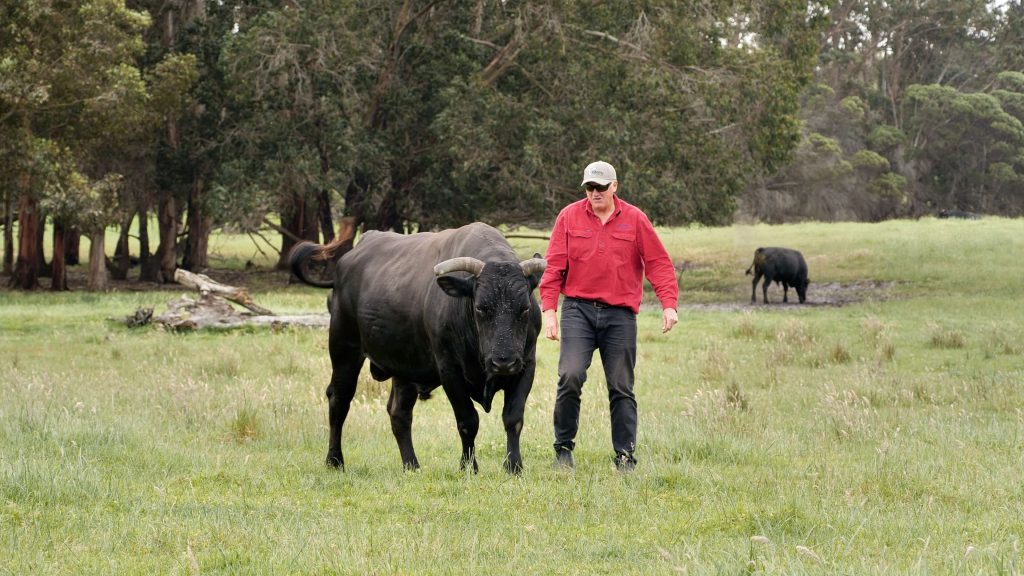
What is the difference between "Wagyu"?
In Australia, we now have three distinctive different production systems for Wagyu Cattle. These are 100% Fullblood Wagyu, Purebred, and Crossbred. It is important that you know what the difference is.
100% Fullblood Wagyu
This is the Japanese Black Wagyu that has not had any other breed introduced into their bloodlines. The Australian Wagyu Association defines Fullblood Wagyu as “The offspring of a Wagyu Sire and a Wagyu Dam whose forebears originate from Japan and whose pedigrees show no evidence of any grading up from the base animals”. For a Wagyu breed line to be verified as ‘fullblood Wagyu’, the genetic line must be able to be proven through secure records and genomic testing to be only ever crossed with other fullblood Wagyu animals. Once a minute percentage of another breed is introduced through breeding then that genetic line will never be called fullblood Wagyu again. Fullblood Wagyu generally produce the best Wagyu beef.
Purebred Wagyu
The purebred Wagyu was developed as a result of the breeding of Fullblood Wagyu bulls with the base cow such as Angus. From this initial mating, called a first cross, the heifer is retained and mated back to a Fullblood or Purebred bull. The progeny of this second mating results in the F2. The progeny from the next mating then produces the 3rd cross and so on until four crosses have been made, you then have a Purebred. This animal is recognised in the USA and Australia breeding programs as Purebred, not Fullblood.
Crossbred or F1
This description is the largest selling style of beef that is produced and sold in Australia. It is the result of a Wagyu genetics (sire) being crossed with another breed (typically Angus or Holstein). The resultant beef will contain 50% Wagyu genetics. Raised and processed correctly these cattle produce a superior product to that of their dam’s breed.
Taste
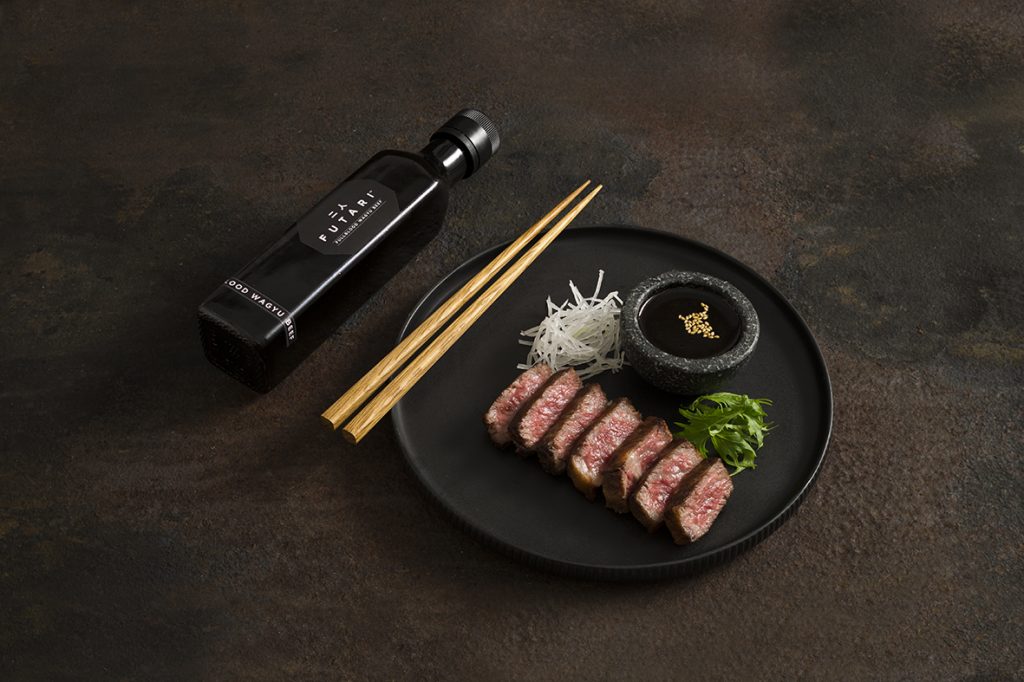
FUTARI Wagyu Beef is a taste sensation like no other – a true culinary experience. The beef’s character is unique – enjoying a softer, healthier fat that is evenly distributed – marbled throughout.
It is this extreme marbling (the most reliable component of meat taste and tenderness) plus the unique combination of lipids, that ensures Wagyu beef’s taste and health supremacy.
The unique Wagyu beef lipids melt at a lower temperature than any other animal fat and share qualities similar to olive oil. When cooking the lipids immediately become liquid and “marinate” the meat ensuring extreme tenderness and juiciness.
What does 100% fullblood Wagyu taste like?
High-quality, marbled, fullblood Wagyu is very soft. The fat melts at a lower temperature than other beef and leaves no greasiness in the mouth, even when eaten raw, such as with a carpaccio. Heavily marbled Wagyu is enormously rich – a few slivers is enough – and the flavour is subtle and intriguing, gently sweet with a lingering savoury character. It is not robust like aged red meat. Some may describe the beef as a smooth caramel and buttery flavour that is intensely sweet and delicate.
Purity
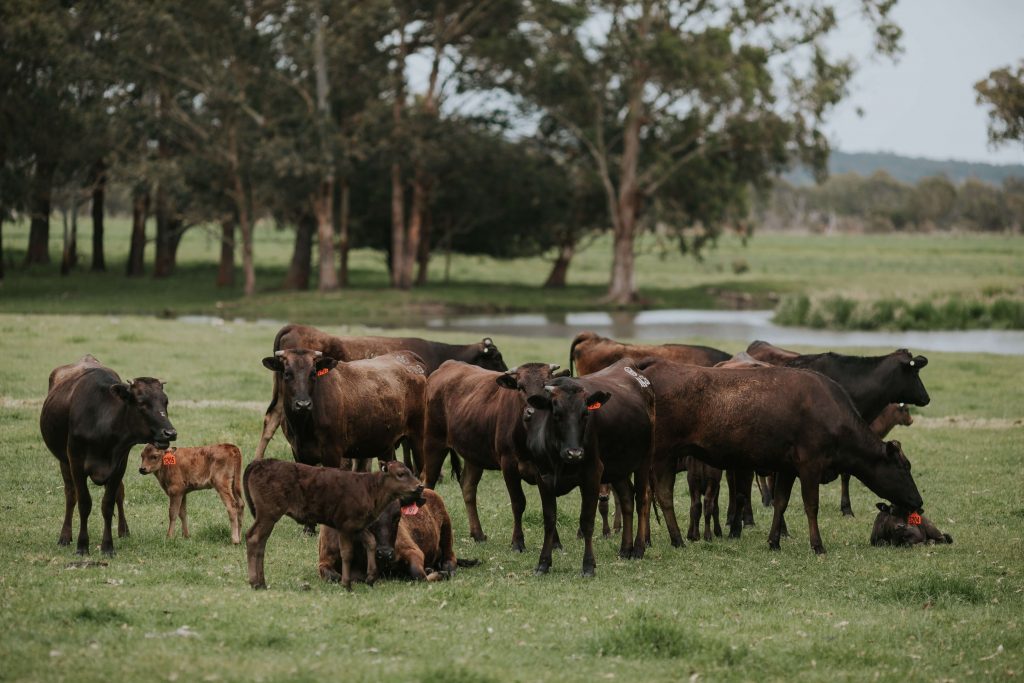
Grading
As a rule – the higher amount of marbling – the higher grade of meat. Due to their genetic predisposition, their feed régime, and the age when slaughtered, Wagyu cattle average a marble score of 6-7 and can reach the top score of 17.
Bloodlines
Australia received its first Wagyu genetics in 1990, a Wagyu female.
Frozen semen and embryos followed in 1991. Australia was greatly influenced by a shipment of five fullblood animals from Japan to the USA in 1993.
Three other major importations of Wagyu genetics into Australia took place, all of these importations being costly long-term projects since there were no protocols for direct live animal imports from Japan to Australia, so they had to be quarantined in the USA.
Australia is now in the unique position of having the best accumulation of Wagyu genetic material outside of Japan.
田尻または但馬
Tajiri or Tajima
These cattle are descendants of Tajiri, a sire born in Mikata District of the Hyogo Prefecture. This is a large, influential sire line in which almost all strains within the Hyogo Prefecture are related to some extent. The Tajiri line has outstanding genetic excellence of meat and finely marbled beef but in combination with a smaller frame and lower growth rates.
This line is famous for good, even temperament and docility. Renowned in “Kobe Beef” and “Matsuzaka-beef” the beef produced in Hyogo Prefecture using Tajiri bloodlines.
These cattle are descendants of Tajiri, a sire born in the Mikata District of the Hyogo Prefecture. This is a large, influential sire line in which almost all strains within the Hyogo Prefecture are related to some extent. The Tajiri line has outstanding genetic excellence of meat and finely marbled beef but in combination with a smaller frame and lower growth rates. This line is famous for good temperament, transmitted by a large number of sires as well as cows. Famous are the names of “Kobe Beef” or “Matsuzaka-beef” from beef produced in Hyogo Prefecture using Tajiri bloodlines.
The Irongate Wagyu prefectural breed content is predominantly from Tajima.
藤良(島根)
Fujiyoshi (Shimane)
This line of cattle is well balanced and produce calves with good growth rates and meat quality. They are also quite in temperament and exhibit a strong maternal ability in dams, which also have high fertility.
The bloodline started in the Tomada district of Okayama Prefecture. While the number of key sires is relatively small compared to other lines, this line is listed as one of the major bull strains because of the excellence of its beef. Dai 7 Itozakura is a Fujiyoshi line bull, probably the most famous of the line.
高知と熊本 (あか牛)
Kochi and Kumamoto
Also known as “Akaushi (Aka =red ushi =cattle),” the Japanese Brown is raised primarily in Kumamoto and Kochi Prefectures. These are red strains and have been strongly influenced by Korean and European breeds, especially Simmental. It was certified as indigenous Japanese beef cattle in 1944.
There are very few of these animals in Australia as their marbling is not as consistent as the Japanese Black strains.
気高(鳥取)
Kedaka (Tottori)
This line formed in the Tottori Prefecture from the descendants of the sire Kedaka born in 1959. Typical characteristics of the line include good growth, larger frame type, good topline and overall balance. They are known for their fine, loose skin. Dai 20 Hirashige is an important sire of the Kedaka line. His semen is still used although the price per straw is over US$1000. He gained 84.7 points as an “Ikushu-Touroku” bull which was the highest honour in Japan of the time. The number of registered sons of this bull is very high.
Health
Unlike any other animal product, Wagyu contains higher amounts of “good cholesterol” mono-unsaturated fats to saturated fats, resulting in “healthier” meat.
Higher HDL
University tests show Wagyu to be healthier than traditional beef due to the lower ratio of saturated to unsaturated fatty acids in the intramuscular fat.
Fifty per cent of the marbling in Wagyu beef is comprised of oleic acid, a monounsaturated fat. While external or selvage fat (around the outside of steak) is largely saturated.
Research is increasingly showing that the internal, intramuscular fat in steak is proportionately much more mono-unsaturated, a beneficial fat.
Why is Wagyu special?
Wagyu is different in the maturing process. During the feeding and through the finishing process the Wagyu steer does not put on fat in the same manner as do English or Continental breeds. Wagyu puts on fat intramuscularly and not “over the rib” as do more conventional animals.
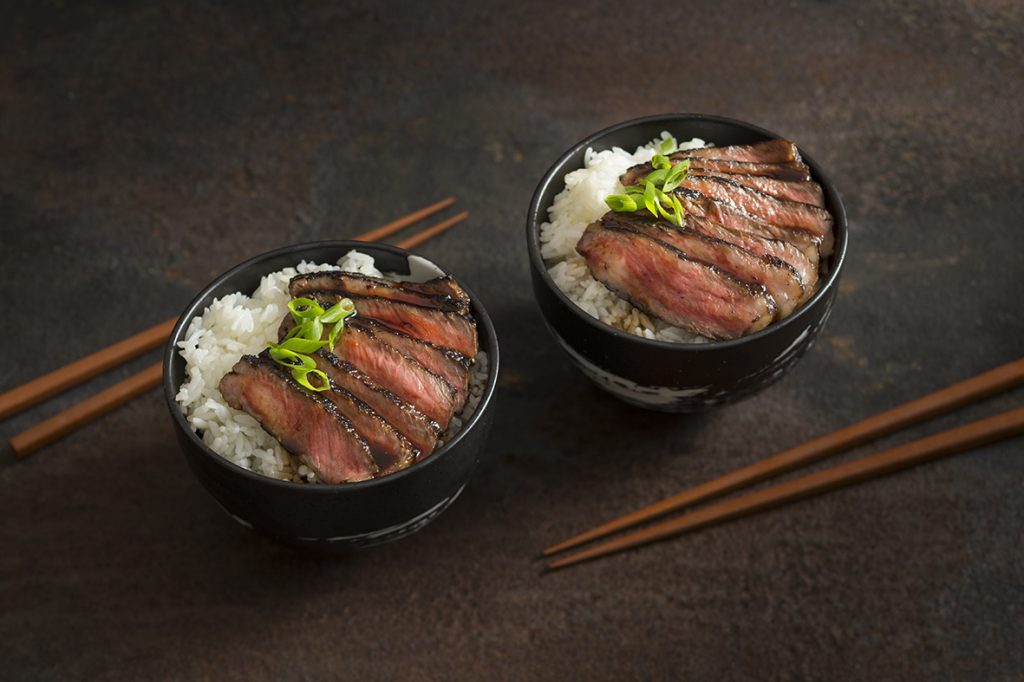
What is marbling? Is this healthy?
While past public campaigns have educated the Australian public that lean beef is the only healthy beef to eat, the marbling in Wagyu beef has a different story altogether. The heavy marbling in Wagyu beef, which is described as ‘an intra-muscular deposit of energy’, contains monounsaturated fats or lipids, the “good fat”. Research has shown that the monounsaturated fats in Wagyu can lower the harmful cholesterol levels in the body.
The marbling is also the reason for the unique flavour, texture, and moisture of Wagyu beef. The monounsaturated fatty acids (lipids) have a very low melting point (typically around 33 degrees Celcius), which means that the beef literally “melts in your mouth”. When Wagyu beef is put onto the hot plate immediately the lipids become liquid and marinate the meat.
